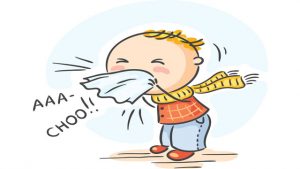 Seasonal Influenza 2018: The Puppy
Seasonal Influenza 2018: The Puppy
Patrick Martin, MD
January 25, 2018
As expected, 2018 Seasonal Influenza is in full swing hot on the heels of Christmas and the Carnival Road March. Seasonal Influenza is caused by influenza type A and influenza type B viruses, mostly the former. The types are classified according to the genes on the surface of the virus.
Some residents of SKN are experiencing typical symptoms of the flu such as fever and chills, muscle aches and pains, runny and stuffy nose, sore throat, cough, loss of appetite and fatigue. Persons of any age may be affected particularly children under 5 years and the elderly.
However, there is no need for panic or to rush to the emergency room. In persons who are normally healthy, the flu resolves in about 3-5 days without complications and without medications except Paracetamol.
The majority of affected persons can be easily managed at home using rest and lots of fluids such as water, homemade juices and soups, and bush teas.
Flu vaccination is not that effective because it is manufactured in advance of the season and because the predicted sub-type may not be circulating.
Anti-viral medications are expensive and usually reserved for complicated cases to limit the rise of resistance.
The flu season in our hemisphere corresponds to the onset of fall and winter in the colder climates. Public health authorities in the USA and Canada are reporting widespread illness extending to Puerto Rico with sporadic activity in the US Virgin Islands. Thus, an upsurge in flu cases in the Federation is normal at this time because of the influx of warmth-seeking visitors plus our close proximity to US territories.
Infected persons can transmit the virus to others who are up to 6 feet away. Flu viruses found in droplets formed in the mouth and nose are then spread when infected persons cough, sneeze or talk.
Virus-containing droplets can land in the mouths or noses of persons nearby or be inhaled into the lungs. Additionally, a person might also get flu by touching a surface or object contaminated with flu virus and then touching their mouth or nose.
Symptoms start 1 to 4 days after the virus enters the body. However, most healthy adults may infect other persons 1 day before symptoms develop and up to 5 to 7 days after becoming sick. Children may pass the virus for longer than 7 days.
Therefore, a person can spread the flu virus before they feel sick and while they are sick. Some persons can be infected with the flu virus but have no symptoms. During this time, those persons may still spread the virus to others.
There are simple anti-flu measures such as avoiding sick persons and staying home if sick. Frequent handwashing with soap and water for at least 20 seconds is very effective. Alcohol-based hand rub may be used if soap and water are not available.
Linens, eating utensils, and dishes belonging to sick persons must be thoroughly washed before used by others. Eating utensils can be washed by hand with water and soap and do not need to be cleaned separately.
Frequently touched surfaces at home, work and school should be cleaned and disinfected, especially if someone is ill.
Protection against the flu is provided by adequate rest (8 hours per day for adults), regular exercise, and eating a plant-based diet which provides all the essential nutrients, vitamins and minerals. Mega-vitamin supplements are not needed; they may cause overdose symptoms.
Persons with conditions such as asthma, heart disease and diabetes, and persons undergoing steroid and cancer treatments, should inform their doctor if they contract a flu-like illness.
In rare cases, a person with the flu may have difficulty breathing. This is a medical emergency requiring immediate attention.
Cover your cough and sneeze: Cough and sneeze into shirt sleeves or tissue, wash hands with soap and water, and keep fingers away from nostrils.
